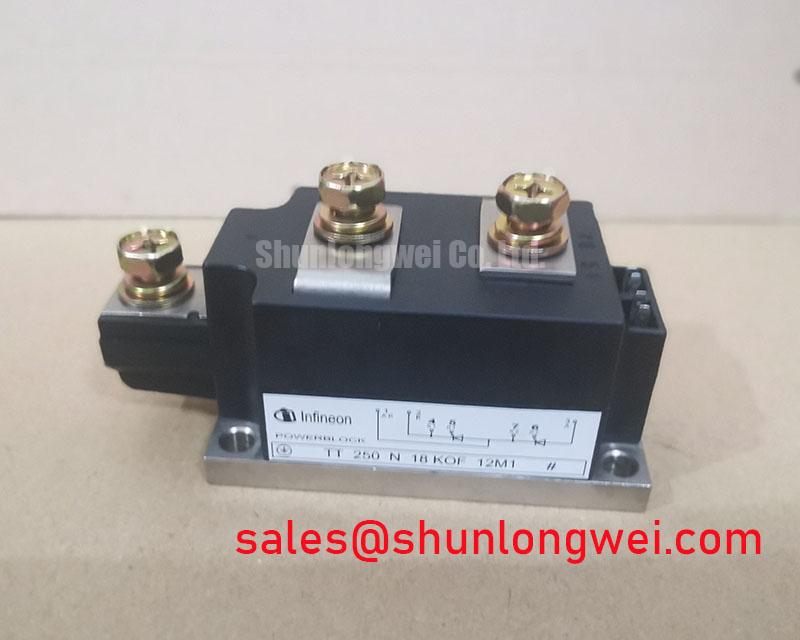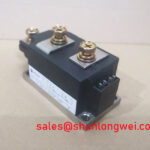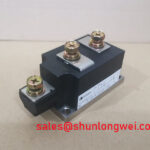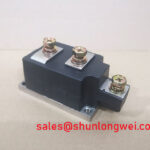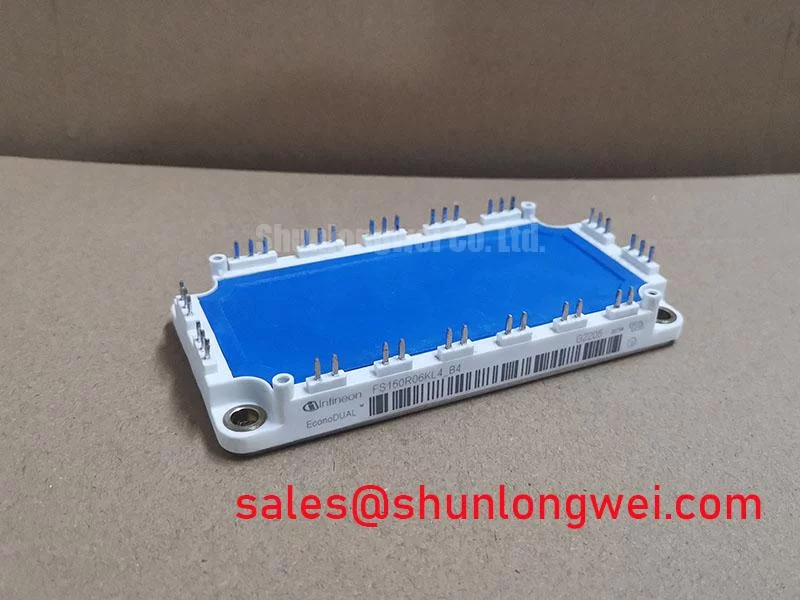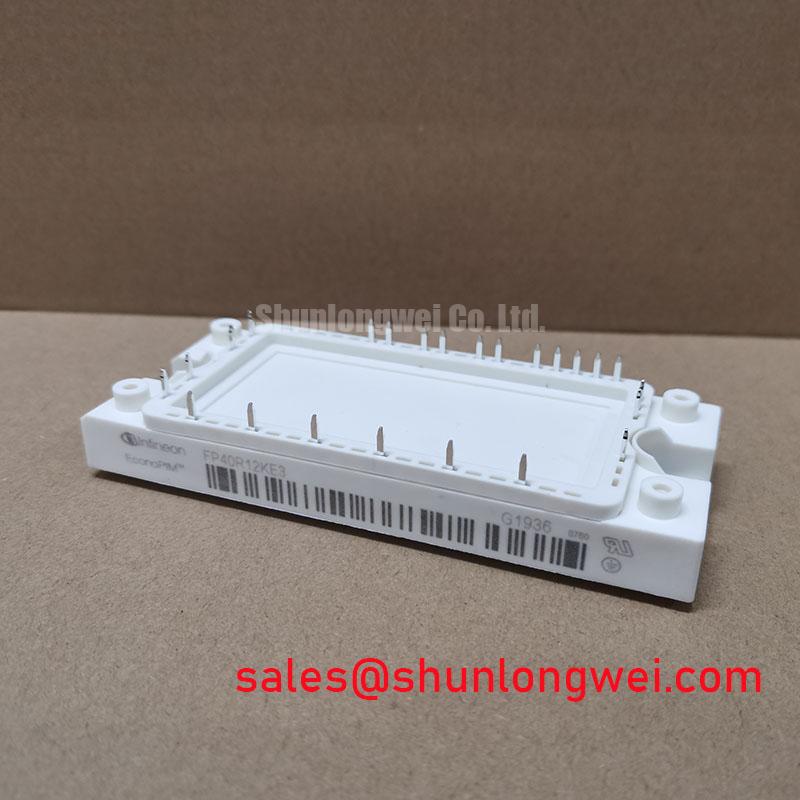Infineon TT250N18KOF12M1: A Deep Dive into this 1800V Thyristor/Diode Module for High-Power Control
Content last revised on October 7, 2025.
Product Overview: Robust Control for Demanding Power Systems
The Infineon TT250N18KOF12M1 is an 1800V, 250A phase control thyristor/diode module engineered for high-reliability power conversion and control systems. It delivers robust performance through its pressure contact technology, which eliminates solder fatigue points for superior operational longevity. Key specifications include: 1800V repetitive peak reverse voltage | 250A average forward current | a high surge current rating of 7500A. This module provides exceptional thermal efficiency and high current handling capability. What is the primary benefit of its pressure-contact design? Enhanced long-term reliability by eliminating solder fatigue. For industrial soft starters and DC drives requiring robust control under high inrush currents, the TT250N18KOF12M1's high I²t rating makes it a strategic choice.
Application Scenarios & Value
System-Level Benefits in Industrial Motor Control and Power Supplies
The TT250N18KOF12M1 is engineered for deployment in high-stress industrial environments where reliability and precise power control are critical. Its primary application is in soft starters for large AC motors, where its ability to handle massive inrush currents without degradation is a decisive advantage. Consider the challenge of starting a heavy-duty conveyor belt system; the initial torque demand creates a significant current surge. This module's I²t value of 281,250 A²s ensures it can repeatedly withstand these surges, preventing premature failure and costly downtime. This electrical ruggedness also makes it highly suitable for controlled rectifiers in DC motor drives, uninterruptible power supplies (UPS), and high-power welding equipment.
In these systems, efficient thermal management is paramount. The module's low on-state voltage and optimized thermal resistance facilitate heat dissipation, allowing for more compact heatsink designs and improving the overall power density of the end equipment. While the TT250N18KOF12M1 is optimized for 1800V applications, for systems operating at lower voltages but requiring similar current handling, the related TT162N16KOF offers a 1600V alternative.
Key Parameter Overview
Highlighted Specifications for System Design
The technical specifications of the TT250N18KOF12M1 are tailored for high-power industrial applications. The parameters below highlight its capacity for robust and efficient operation.
| Parameter | Symbol | Value | Unit | Condition |
| Repetitive Peak Reverse Voltage | VRRM | 1800 | V | Tvj = -40°C to 125°C |
| Average On-State Current | ITAV | 250 | A | TC = 85°C |
| Surge Current (non-repetitive) | ITSM | 7500 | A | Tvj = 125°C, t = 10 ms, sine 50 Hz |
| I²t-Value | I²t | 281250 | A²s | t = 10 ms |
| Gate Trigger Current | IGT | 200 | mA | Tvj = 25°C |
| Operating Junction Temperature | Tvj op | -40 to 125 | °C |
Download the TT250N18KOF12M1 datasheet for detailed specifications and performance curves.
Technical Deep Dive
The Engineering Advantage of Pressure Contact Technology
A critical, yet often overlooked, feature of the TT250N18KOF12M1 is its pressure contact design. Unlike modules that rely on soldered connections between the semiconductor die and the baseplate, this technology uses a precisely engineered clamping force to maintain electrical and thermal contact. This completely eliminates solder layers, which are a primary failure point in power modules subjected to frequent temperature fluctuations. Each on/off cycle in a motor drive or rectifier causes the module to heat and cool, leading to mechanical stress on solder joints. Over thousands of cycles, this can cause solder fatigue, cracks, and eventual device failure. The pressure contact system is analogous to a high-quality bolted joint versus a welded one in a mechanical structure; it is inherently more resilient to cyclic stress and vibration.
This design choice directly translates to a significant increase in operational lifetime and reliability, particularly in applications with high power cycling demands. For engineers designing systems for critical infrastructure like UPS (Uninterruptible Power Supply) or industrial automation, this enhanced robustness provides a greater margin of safety and reduces the total cost of ownership by minimizing maintenance and replacement needs.
Frequently Asked Questions (FAQ)
What is the primary advantage of the 1800V rating on the TT250N18KOF12M1?The 1800V repetitive peak reverse voltage (VRRM) provides a substantial safety margin for applications on 575V, 600V, or 690V AC lines. This margin is crucial for absorbing voltage transients and spikes that commonly occur in industrial grids, thereby enhancing the reliability of the overall system.
How does the high surge current rating (ITSM) of 7500A benefit my design?A high surge current rating is essential for applications like motor soft starters or capacitor charging circuits. It ensures the thyristor can safely handle the large, brief current spikes that occur during motor startup or initial power-up without sustaining damage. This electrical ruggedness simplifies protection circuitry and improves system survivability during fault conditions.
What does the I²t value of 281,250 A²s signify in a practical sense?The I²t value represents the thermal energy the device can withstand during a short, non-repetitive fault before failure. A higher value, like that of the TT250N18KOF12M1, allows for easier coordination with protective fuses. It means you can select a fuse that will blow before the thyristor is damaged, protecting the more expensive power module and preventing catastrophic system failure.
Is the pressure contact technology in this module suitable for environments with high vibration?Yes, the pressure contact design offers superior resilience to mechanical shock and vibration compared to traditional solder-based modules. By eliminating solder joints, which can crack under mechanical stress, it provides a more robust and reliable solution for applications such as traction, heavy machinery, and mobile power systems.
Strategic Design Considerations
Integrating the TT250N18KOF12M1 into a power system requires a focus on maximizing its inherent reliability. The foundation of this is the mounting procedure; achieving the correct and evenly distributed clamping force is essential to realize the full benefits of the pressure contact technology. This ensures optimal thermal transfer to the heatsink and maintains the integrity of the electrical connections over the module's long operational life. Furthermore, a well-designed gate drive circuit is critical to ensure clean, reliable triggering and prevent spurious firing, which can be detrimental in phase-controlled applications. By addressing these mechanical and electrical interface requirements, designers can fully leverage the module's capabilities to build exceptionally durable and efficient high-power control systems.

